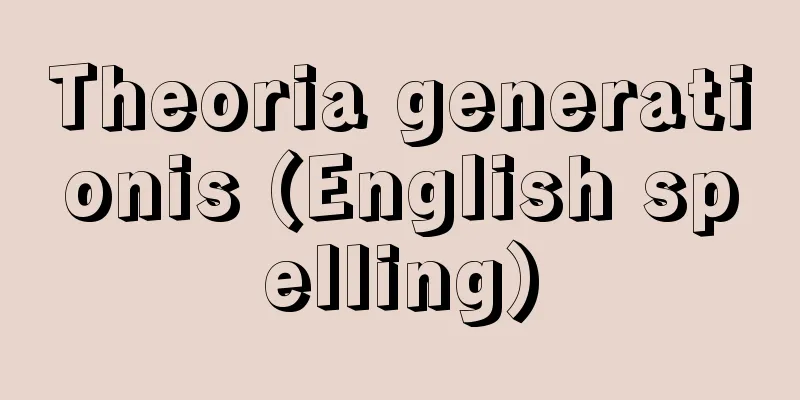Revenge - retaliation

|
It is also called "adauchi" and usually means to kill the one who killed one's lord or father to get revenge. In rare cases, it has been carried out for one's mother, grandparents, husband, wife, child, sibling, uncle or teacher, or even for friends. It is a kind of private punishment, and was an unavoidable custom until the authority of the law was established, so it was seen in ancient times in both the East and the West, and is still practiced in primitive societies today. We have seen and heard that it is practiced by gangsters in civilized societies as well. However, in Japan, it was prohibited by law in February 1873 (Meiji 6), so there is no longer any socially recognized form of revenge. It was socially recognized or praised in the feudal era, especially in the Edo period, and there are over 100 recorded cases, so the actual number was probably much higher. The most famous of these was the Ako Roshi incident, which took place in December 1702 (Genroku 15) and involved 47 men led by Oishi Yoshio. There are about 400 Kabuki and Joruri plays based on this incident, including "Kanadehon Chushingura" by Takeda Izumo, and it was customary for New Year's theater performances in the Edo period to feature either Chushingura or a Sogamono. Until recently, when movie or theater attendance was sluggish, it was believed that using Chushingura as a pinch hitter would help revive the economy, and Chushingura was seen as the world's cash cow. Thus, the influence of Chushingura was not limited to the feudal period, but revenge itself was not unique to the feudal period. The revenge of the Soga brothers took place at the foot of Mount Fuji in 1193 (Kenkyu 4), and became the subject of many stories, joruri puppet plays, Noh plays, and other works, including "The Tale of the Soga Brothers." The Soga incident differs from the Ako Roshi incident in that it was a revenge of two brothers for their father, whereas the Ako Roshi incident was a collective revenge for their lord. However, the incident in the Kojiki and Nihon Shoki in which King Mayowa assassinated Emperor Anko in the third year of the reign of Emperor Anko was also a revenge for the murder of Prince Okusa, King Mayowa's father. This incident took place in the mid-fifth century, and is the oldest recorded example of revenge in Japan. After that, there was the incident involving the Soga brothers, and around 1332 (Ganko 2), Kumawaka, the son of Hino Suketomo, who was killed in the Genko Incident, killed Saburo, the second son of Honma Yamashiro Nyudo, who had killed his father on Sado Island, and escaped from the island. The details of this incident are given in the "Taiheiki," and it is also known as a revenge for his father. Therefore, it is clear that revenge was not a custom unique to the feudal era, but there was once a trend to praise it as a virtue in the feudal era. In a speech to the Meijikai in February 1891 (Meiji 24), Hakuo Nishimura Shigeki, the founder of the Japan Kodokai, mentioned revenge, suicide, and carrying a sword as "the three beautiful customs of our country." He said that revenge was the colloquial term for vendetta, which no doubt came from a passage in the Book of Rites that reads, "The revenge of a father is not shared with heaven, the revenge of a brother is not turned against the army, and the revenge of a friendship is not shared with the country." He went on to say that "the people of our country are loyal and filial, and are skilled in military bravery. They have a deep understanding of shame, and many of them carry out these acts, which is why people in the world also praise them but do not ignore them," and that it is "the heartfelt sentiment of a loyal subject and a filial son, and a good deed that is in accordance with the will of heaven." Tokuo's intention was to praise this custom as one that "should boost the morale of the people and help expand the nation's prestige," and needless to say, he did not want to revive it as it is in the present day. [Tetsushi Furukawa] Source: Shogakukan Encyclopedia Nipponica About Encyclopedia Nipponica Information | Legend |
|
「あだうち」ともいい、普通、君父を殺した者を討ち取って怨(うら)みを晴らすことを意味する。まれには母、祖父母、夫、妻、子、兄弟姉妹、伯叔父のため、あるいは師、友人のためにもこれを行った例がある。一種の私刑で、法の権威が確立するまでのいわばやむをえない風習であるので、古くは東西両洋の各地にみられ、現在でも未開社会では行われる場合がある。文明社会でも、暴力団などにそれが行われることは、われわれの見聞するとおりである。しかしわが国では、1873年(明治6)2月法律によって禁止されたので、社会的に公認された敵討はもはや存在しない。それが社会的に公認もしくは賞賛されたのは封建時代、ことに江戸時代で、記録に残る件数だけでも100件を超えるから、実際ははるかにそれより多かったであろう。そのなかでとくに有名になったのは、1702年(元禄15)12月に決行された大石良雄(よしお)以下47人による赤穂浪士(あこうろうし)事件で、この事件を題材にした歌舞伎(かぶき)・浄瑠璃(じょうるり)の脚本だけでも、竹田出雲(いずも)作『仮名手本忠臣蔵(かなでほんちゅうしんぐら)』をはじめ約400本を数え、江戸時代の芝居の正月興行はこの忠臣蔵か曽我物(そがもの)を上演するのを吉例としていた。近年まで、映画や芝居の観客動員が不振になると忠臣蔵をピンチヒッターとして起用すれば景気が持ち直すとされ、忠臣蔵はこの世界のドル箱的存在とみられてきた。 そのように、忠臣蔵の影響力は封建時代に限られていないが、敵討そのものも封建時代特有のものではなかった。曽我兄弟の敵討は1193年(建久4)富士の裾野(すその)を舞台として行われ、それが『曽我物語』をはじめとする多くの物語、浄瑠璃、謡曲などの題材となった。曽我事件は、赤穂浪士事件が主君のための集団的敵討であったのに対して父のための兄弟2人の敵討であった点が異なっているが、記紀にみえる安康(あんこう)天皇3年に眉輪(まよわ)王が安康天皇を弑(しい)した事件も、眉輪王の父大草皇子を殺したのに対する敵討であった。この事件は5世紀中ごろの話で、わが国における敵討の記録としてはもっとも古い。その後、曽我兄弟の事件があり、1332年(元弘2)ごろ、元弘(げんこう)の変の影響を受けて斬(き)られた日野資朝(すけとも)の子の阿新(くまわか)は、佐渡で父を殺した本間山城入道の次男三郎を斬って島を脱出した。そのいきさつは『太平記』にくわしいが、これも父のための敵討として知られている。 したがって、敵討が封建時代特有の習俗でなかったことが明らかであるが、これを封建時代の美徳として推賞する風潮がかつてはあった。日本弘道会の開祖泊翁(はくおう)西村茂樹(しげき)は、1891年(明治24)2月の明治会演説で「本邦の三美風」として復讐(ふくしゅう)、自殺、帯刀(たいとう)を取り上げ、そのうちの復讐は俗語の敵討であって、このことは『礼記(らいき)』の「父ノ讐(あだ)ハ與(とも)ニ天ヲ戴(いただ)カズ、兄弟ノ讐ハ兵ニ反セズ、交遊ノ讐ハ国ヲ同ジウセズ」の語より出たに相違ないが、「本邦人民の忠孝に厚くして勇武に長じ、恥を知るの深きよりして之(これ)を実行する者多く、世人も亦(また)之を感称して措(お)かざること」であって、「忠臣孝子の至情にして又(また)天理に協(かな)ふ所の善行」であると評価している。泊翁の意図は「国民の志気を奮興し、国威の拡張を助くべき」風俗としてこれを推賞しているのであって、いうまでもなく、これをそのまま現在に復活しようというのではない。 [古川哲史] 出典 小学館 日本大百科全書(ニッポニカ)日本大百科全書(ニッポニカ)について 情報 | 凡例 |
<<: Revenge in Raglan Sleeves - Revenge in Raglan Sleeves
Recommend
Safety rating - Anzenhyoka
… To determine whether the design of equipment wi...
Broadside ballad
… [Hiroshi Sugiura] [English Ballads] Until aroun...
Summer -
①The oldest legendary dynasty in China ②One of the...
Minpen - Minpen
This refers to urban riots that occurred in China...
Glaciology
...Alternative: Wegener and HW Ahlmann are two of...
Mosla chinensis (English spelling)Moslachinensis
…[Murata Gen]. … *Some of the terminology that me...
Sangaku - Sangaku
A form of miscellaneous art that includes acrobat...
Chaldea Church
…It spread from Persia to India by sea and Centra...
Nobutoshi Kinoshita
1577-1642 Azuchi-Toyotomi - A daimyo in the early...
Kaihoku Kainan Do Senishi - Kaihoku Kainan Do Senishi
…During the Five Dynasties, it belonged to the So...
unwillful off side
…During the game, it serves to ease the tension b...
Amoeba limax (English spelling) Amoeba limax
... The giant amoeba Amoeba proteus (illustration...
Proclava kochi (Crab-guard shellfish) - Proclava kochi (English name)
A gastropod shell of the family Ploceidae (illustr...
X-ray spectroscopic analysis
...In addition, emission spectroscopy has a highe...
Kaikin
Restrictions on maritime traffic and trade. The p...









